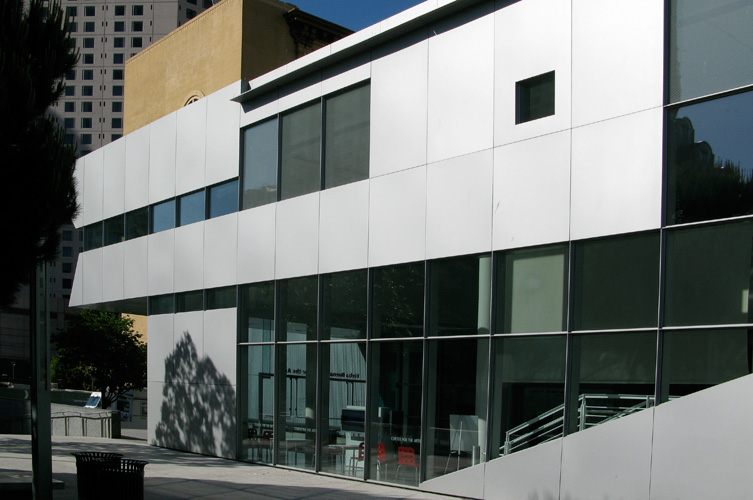Yerba Buena Complex - Preparation: Phase II
The above images and text to the right begin an initial proto-analysis of the geologic origin and paleo-geographic depositional environment of the Yerba Buena Center for the Arts as Yerba Buena Complex Phase II. Research of broader geologic and foundational Anthropocene site elements are incomplete but form the beginning of a potential Phase II of the project. This initial survey, presented in drawings as part of the installation for Yerba Buena Complex Phase I, is based on comparable research, information and procedures from the completed geologic analysis of the Rapson Hall Group, University of Minnesota, Minneapolis, MN for the project, SITE INDEX, a collaboration with Landscape Architect, Rebecca Krinke, 2001-2009, and consultation with MNGS geologist, Carrie Jennings. Other Yerba Buena Garden site elements to be considered in a full geo-origin/geographic analysis.
|
ALUMINUM METAL - .XX cm. layer, malleable, ductile, highly conductive, Anthropocene altered metalliferous, vertical sheath over ()% Yerba Buena Complex facade. Purified fused igneous melt from XX% natural North American or global, and XX% recycled, undifferentiated, North American or global sources. Provenance and petrogenesis: Natural sources - Anthropocene eroded and extracted tropical or paleo-tropical laterite soil complex.
CALC-SILICATE CONGLOMERATE – Assorted clastics cemented in a complex calcium silicate matrix to form congomleratic mass as dominate Yerba Buena Complex tectonic structure. Cement derived from Calcium carbonate (CaCO3) Anthropocene calcination at 1500 ºC at surface pressures to form CaO, CaCO or lime. Rehydrated in situ, clast laden slurry becomes massive XX m thick horizontal and vertical beds, to 2 m thickness at bottom of sequence. Provenance and petrogenesis: Cement: probable local fossiliferous marine carbonates; Clasts: probable local Franciscan Complex or Great Valley Sequence derived gravels; Ferruginous structures: possible meta-continental natural and or recycled origin . |



